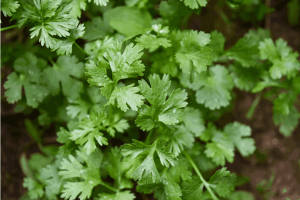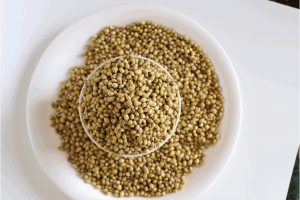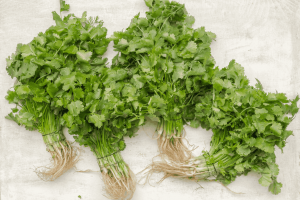How to Grow Coriander from Seed to Harvest
Coriander (Coriandrum sativum L.) is one of the most ancient spices cultivated in our country. Coriander has many medicinal values. The young plants of coriander are called ‘coriander’. After curry leaves, coriander is widely used as a flavoring leaf in our food. Its leaves and stems are used not only in cooking, but also as a topping in salads, along with onion, carrot, beetroot, Spinach, radish and lemongrass.

Varieties -Characteristics:
Co-1: This variety was selected from Germ Jam, Department of Aromatic and Horticultural Crops, Tamil Nadu Agricultural University, Coimbatore. 2.5-3.0 tones of coriander per acre can be obtained after 40 days of sowing. If the crop is kept for seeds, the crop period is 110 days.
Co-2: It is selected from ‘P-2’ variety from Gujarat state. This variety was released by the Department of Aromatic and Plantation Crops, Tamil Nadu Agricultural University, Coimbatore. Coriander yields up to 4.0 tons per acre after 40 days of sowing. For seeds, the harvest period is 90-100 days.
Co-3: This variety is selected from Indian Agricultural Research Institute variety 695 (I.A.R.I.-695). It is resistant to dry rot and powdery mildew on seeds.
Sadhana (CS-4): This variety was developed at Acharya N. G. Ranga Agricultural University, Regional Agricultural Research Station, Lampharam, Guntur. It is suitable variety for cultivation of coriander (leaf) and coriander seed. Plants grow up to 70 cm tall. Resistant to ‘Pebunka’. Harvesting period is 100-110 days.
C.S. – 7: This variety was also researched at Regional Agricultural Research Station, Lam Farm, Guntur and released by Acharya N.G.Ranga Agricultural University. It is useful for leaf and seed.
Guj-1 and Guj-2: These two varieties are developed by ‘Gujarat Agricultural University’. These varieties are highly branched and work well for ‘coriander’. Both these varieties are suitable for Telangana soils.
Swati (C.S.–6): Harvesting period 80-85 days. A short-lived variety suitable for soils with low moisture-holding capacity. Coriander and Coriander seeds are suitable varieties for cultivation.
E.C. – 232666: This variety is very suitable for coriander.
D.H. – 5: A variety suitable for light soils with waterlogging.
Weather:
Temperature of 20-29°C is required for good crop growth. If the temperature is more than 35-40 cm, the growth of the plant will be severely affected. Also, even if there is heavy rain, the growth of the crop will be severely damaged.
Planting time:
Coriander can be sown in June-July and November-December. Winter crop sown in November-December months gives high yield.
Soils and soil preparation:
Well-drained loam or clay soils are best. Soils with a Soil PH levels 6–8 suitable for coriander cultivation.
The land should be plowed 3-4 times and 4-6 tones of cattle manure per acre should be mixed in the last push.

Method of Planting:
Before sowing, coriander seeds should be split into two. Otherwise the seeds germinate late and the germination percentage is greatly reduced. For this the seeds should be poured on the ground and rubbed well with the feet of sandal, the crushed seed should be spread 15 cm in the field or in the rows. Seeds germinate 8-12 days after sowing.
Seed Per Acre:
Seed Rate: 4-5 kg of seed per acre is sufficient.
Harvesting: 20-25 days after sowing
Yield: 2.5-3.0 tones per acre
Water Management:
Watering should be given immediately and on the third day water should be given. Then water drops should be given at intervals of 7-10 days.
Harvesting:
Plants should be thinned 20-25 days after sowing. Again by thinning on 30th day and 40th day the coriander yield is up to 2.5-3.0 tones per acre. The rest of the plants should be left for seeds.

Follow WalPencil to get to know cultivation tips for other vegetable crops like Curry Leaf, Fenugreek, Amaranthus etc.
